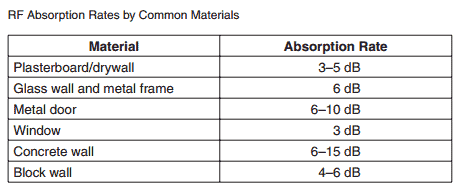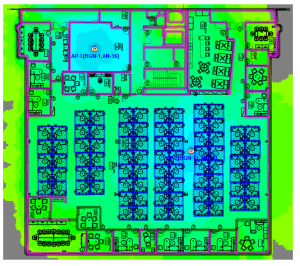
 When designing a wireless network, there are quite a few factors that one must consider. For example, it’s extremely important to estimate the user density in order to lay out the proper number of access points (APs). Another important consideration is what materials go into the building: the walls, the floors, the doors.
When designing a wireless network, there are quite a few factors that one must consider. For example, it’s extremely important to estimate the user density in order to lay out the proper number of access points (APs). Another important consideration is what materials go into the building: the walls, the floors, the doors.
Learn more about wireless surveys.
It’s understandable that each different type of material affects wireless signal differently. Here’s a breakdown of the five different phenomena that can impact a Wi-Fi signal:
1. Reflection
A wireless signal is just radio waves. Just like light, it can bounce off of certain surfaces. Metal, for one, is a highly reflective material. This is a common occurrence for offices since they are generally in complex and intricately designed structures. If a large amount of reflection occurs, signals can be weakened and also cause interference at the receiver.
2. Refraction
Refraction is the bending of a wave when it enters a medium where the speed is different. For example, glass or water can refract waves. This can play into consideration when you’re carefully placing APs. Different media have different refractive indexes. It’s important to track possible refraction when designing your wireless network because if a signal changes direction in traveling from sender to receiver, this can cause lower data rates, high retries and lead to an overall lessening of capacity.
3. Diffraction
This is when waves encounter an obstacle and travel around it — the wave’s direction and intensity both change. In fact, diffraction can even be more pronounced or introduce a shadow zone depending on the size and shape of the obstacle. Hills are known to cause diffraction to wireless signals.
4. Scattering
While this phenomena is similar to refraction, it’s more unpredictable. Dust, humidity, unevenness and other qualities in a material can cause a signal to scatter in all directions. This can have a significant impact on signal integrity and strength. Chain-link fences and even smog are notorious for scattering RF signals.
5. Absorption
This is one of the most common reactions we see wireless signal have to materials. Basically, a material is converting the signal’s energy into heat. This occurs largely due to the molecules in the medium being unable to move fast enough to “keep up” with the RF waves that are trying to pass through it.
Different materials naturally have different absorption rates. Wood and concrete, for example, can make a huge impact on signal strength because of how much they absorb the radio waves.

CWNA Certified Wireless Network Administrator Official Study Guide
It’s important to note that any given material can exert a combination of these impacts signal. Glass can both refract and absorb. That is in part why it is so essential to meticulously plan your wireless network, taking careful consideration of the different materials that your signal will encounter.
For more information on the areas on which wireless network engineers must pay close attention, see 7 Gotchas of Wi-Fi.